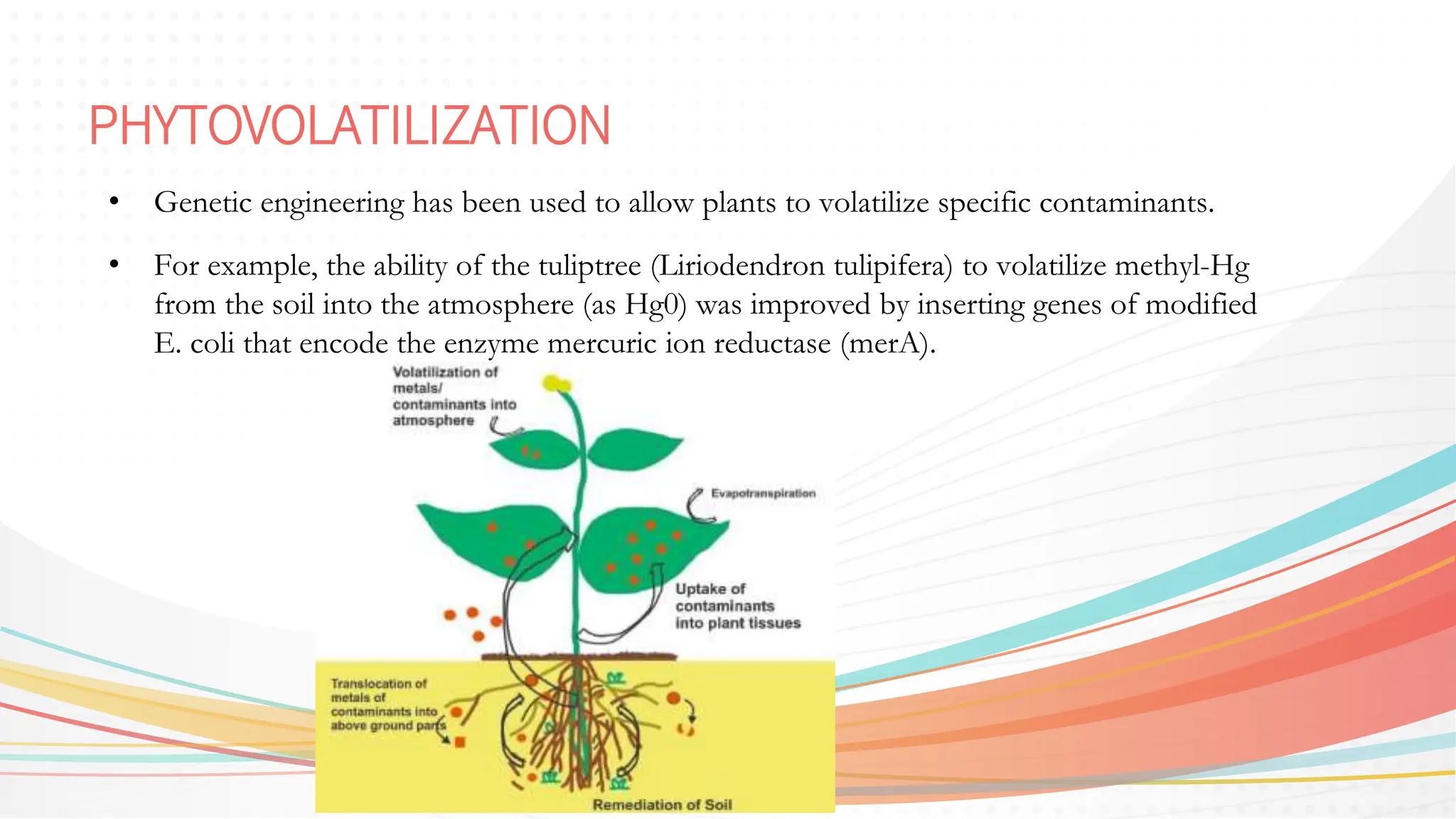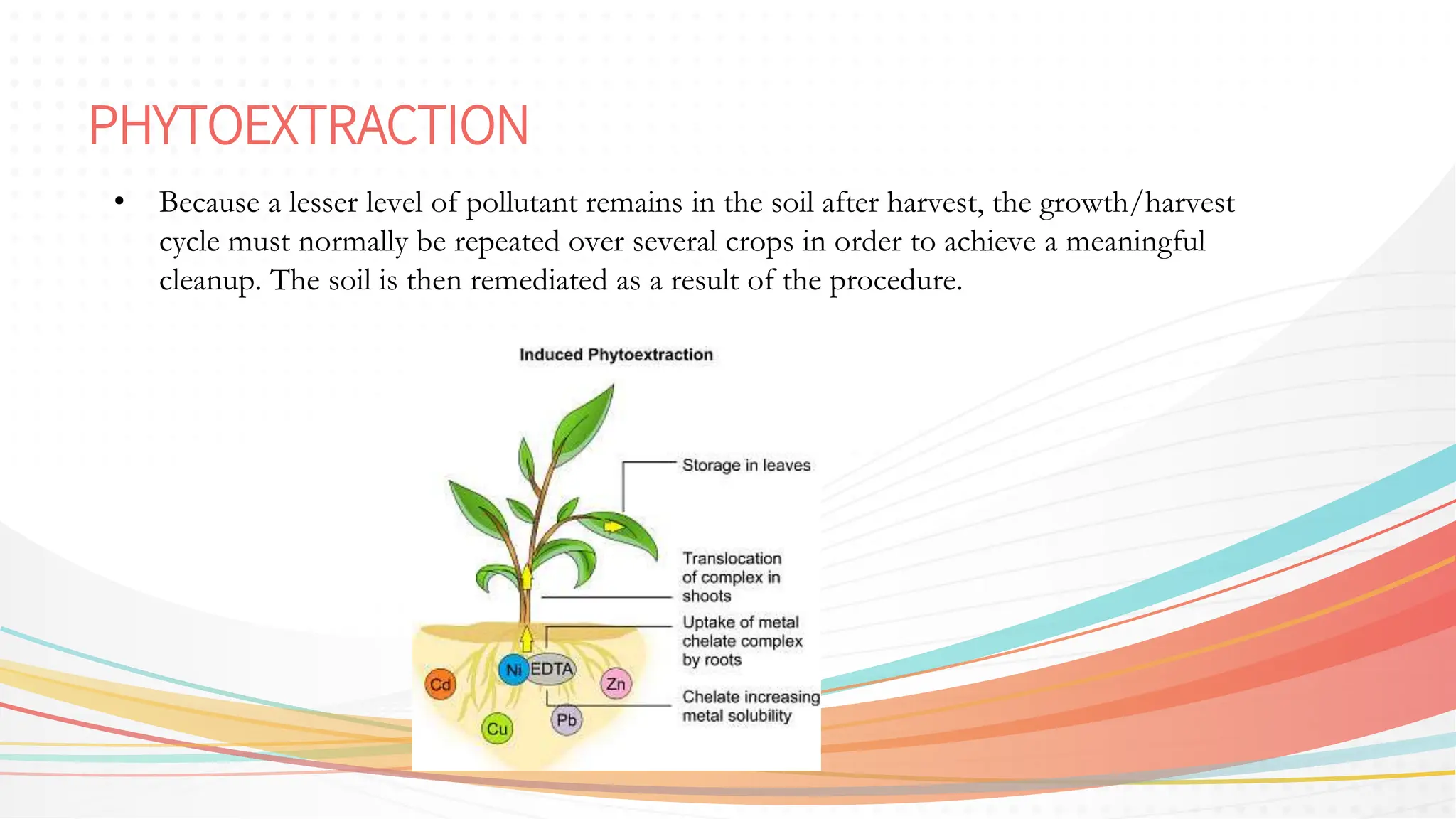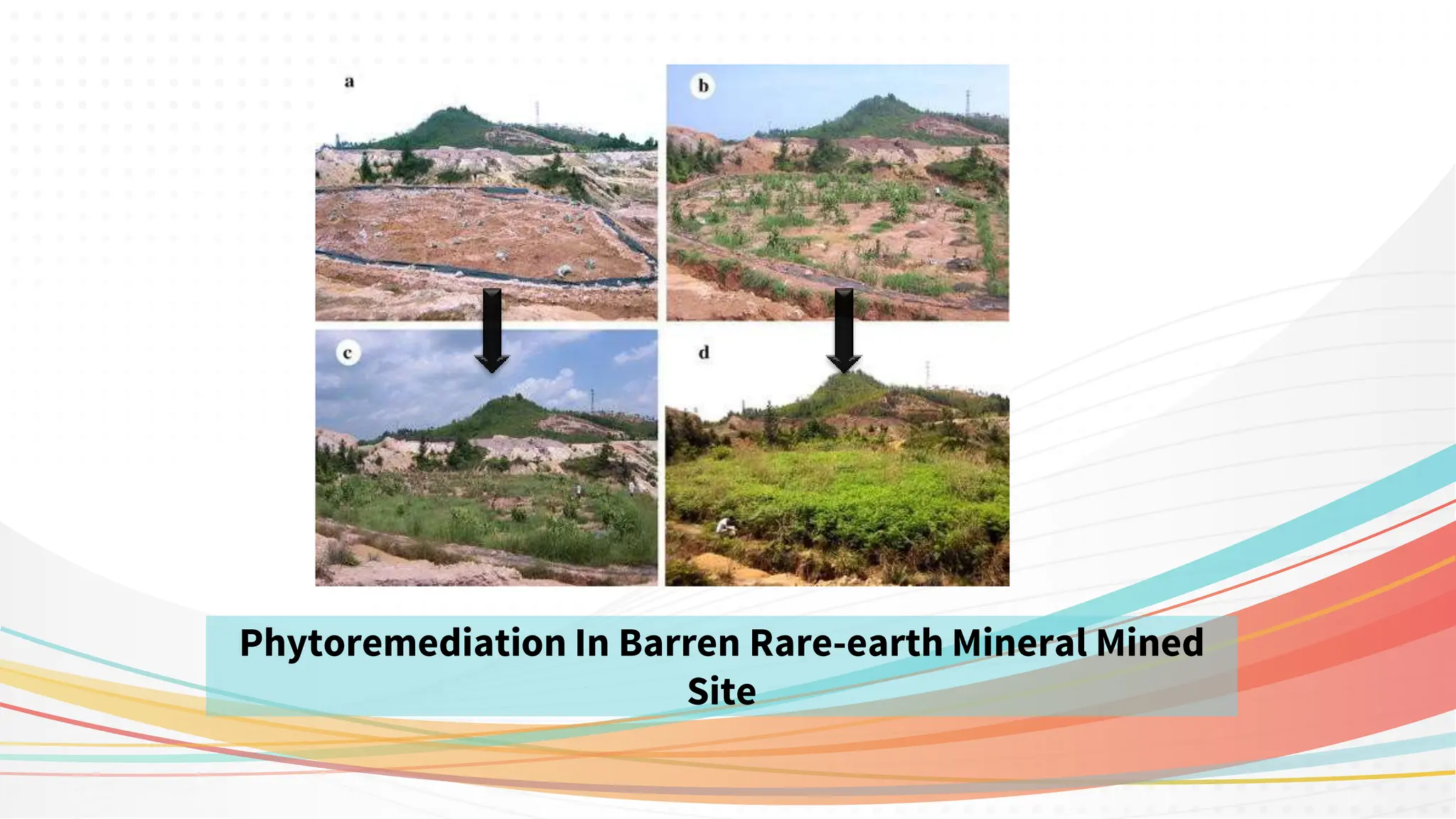This document discusses different types of phytoremediation including phytodegradation, phytovolatilization, and phytoextraction. Phytodegradation involves plants breaking down organic pollutants like herbicides through enzymes and metabolizing them. Phytovolatilization uses plant evapotranspiration to convert pollutants like VOCs into gaseous forms. Phytoextraction uses hyperaccumulator plants to absorb and concentrate heavy metals in their biomass above ground. The document provides examples of each type and discusses plants used in phytoremediation as well as advantages like being environmentally friendly and disadvantages like processes being slow.
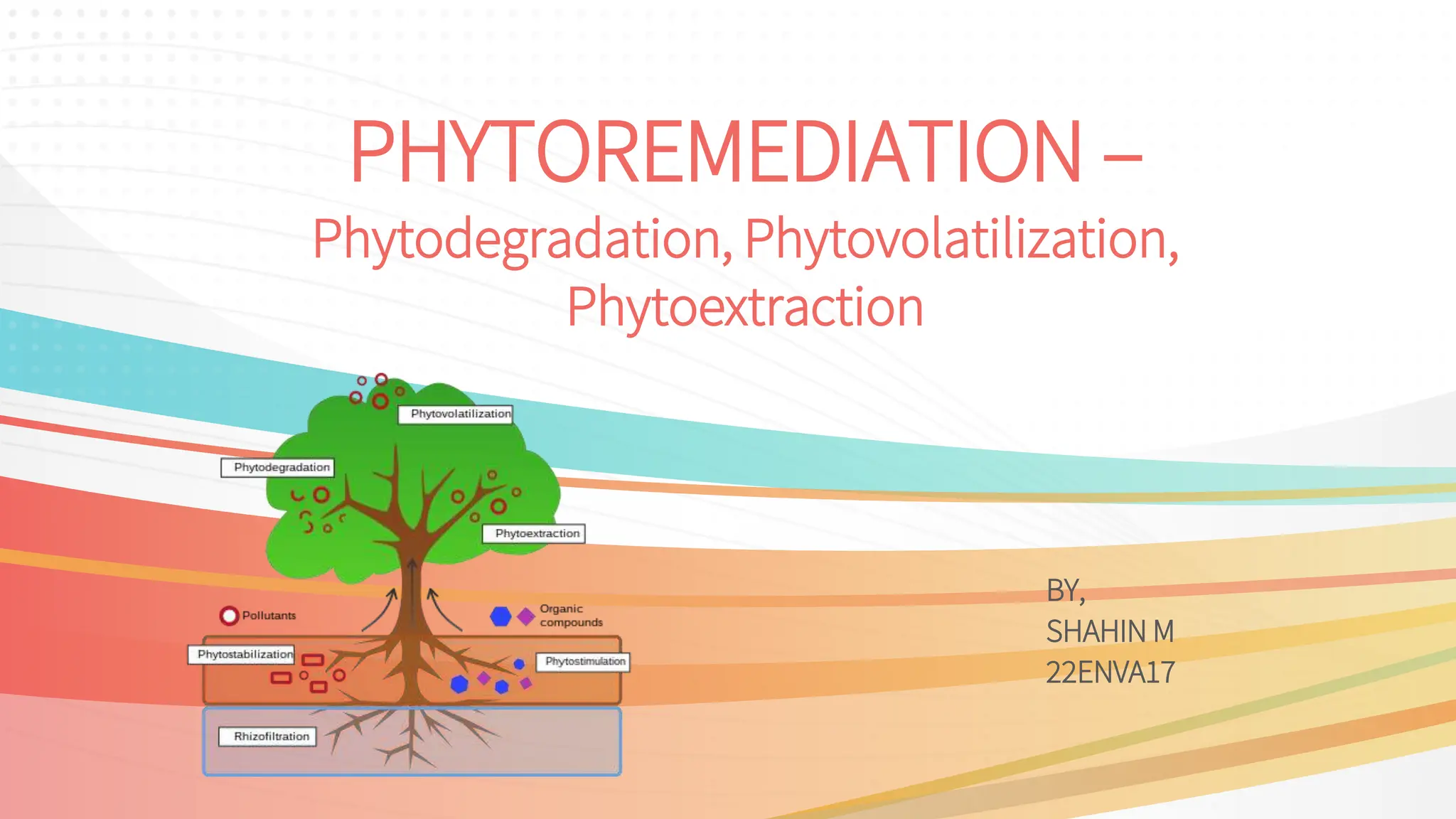
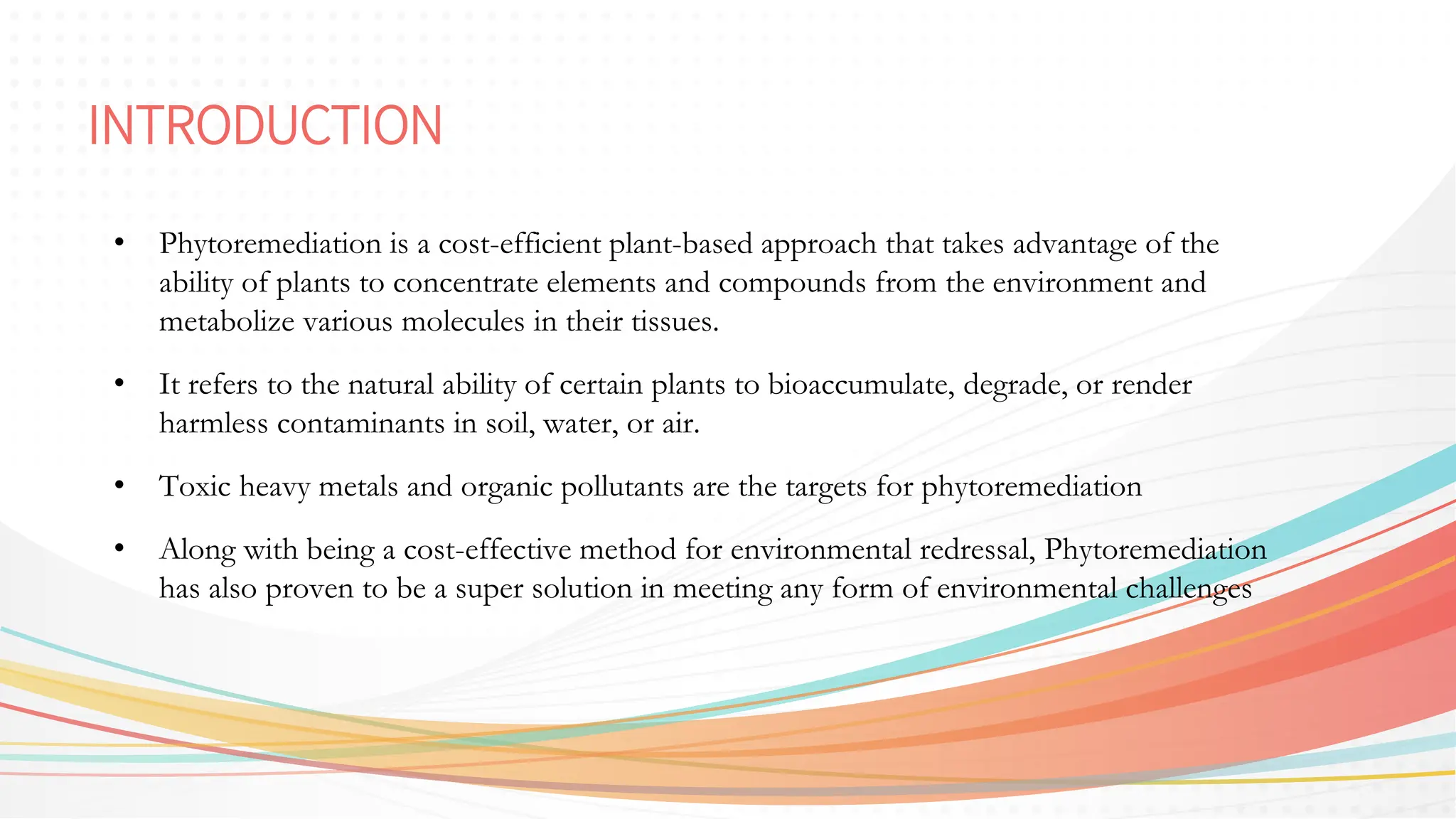

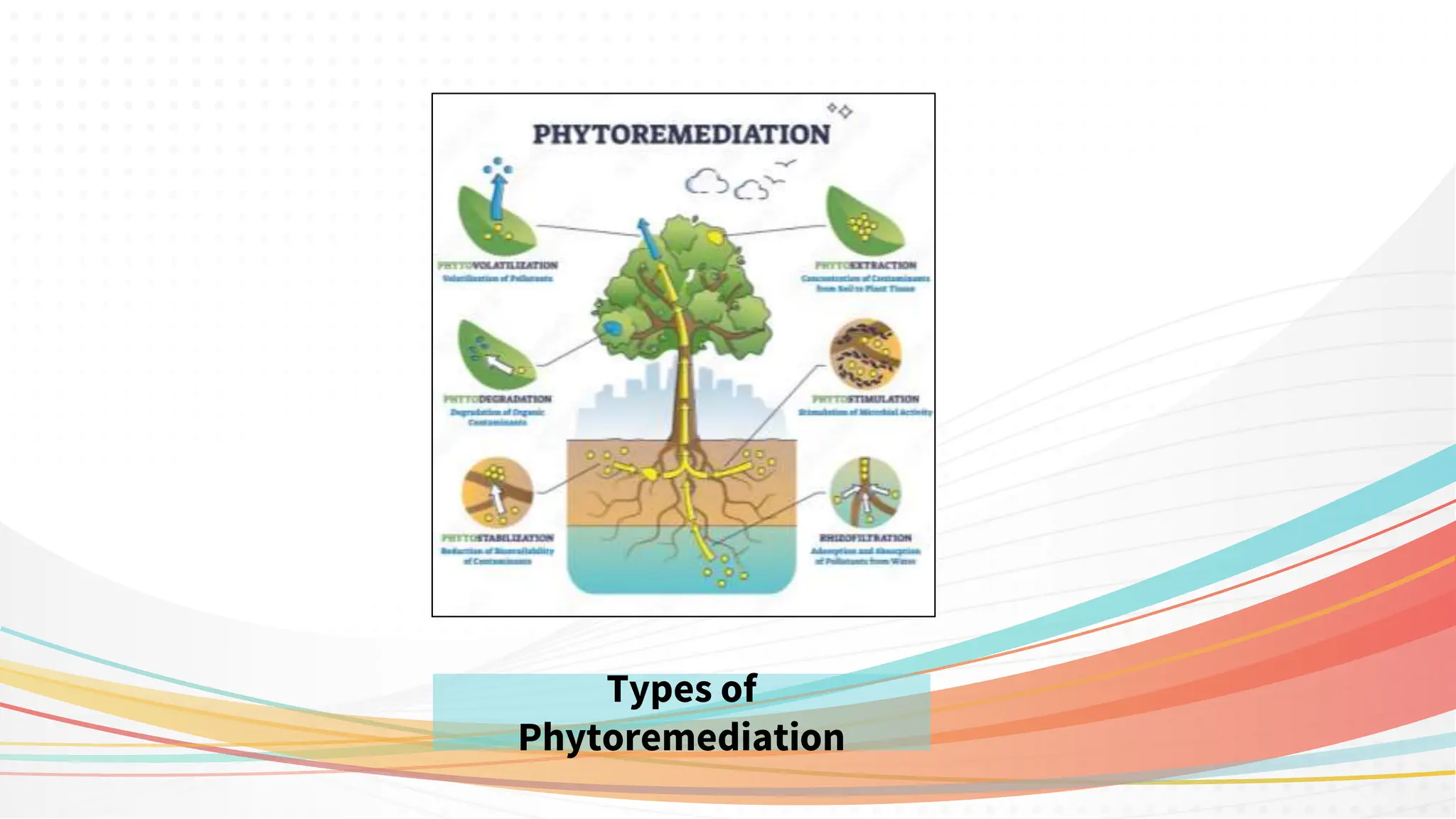


![PHYTOVOLATILIZATION
• Phytovolatilization involves the uptake of contaminants by plant roots and its conversion
to a gaseous state, and release into the atmosphere.
• This process is driven by the evapotranspiration of plants. Plants that have high
evapotranspiration rate are sought after in phytovolatilization.
• Organic contaminants, especially volatile organic compounds (VOCs) are passively
volatilized by plants.
• For example, hybrid poplar trees have been used to volatilize trichloroethylene (TCE) by
converting it to chlorinated acetates and CO2. Metals such as Se can be volatilized by
plants through conversion into dimethylselenide [Se(CH3)2].](https://image.slidesharecdn.com/phytoremediation-231221090859-58e6510b/75/Phytoremediation-of-soil-from-pollutants-7-2048.jpg)
